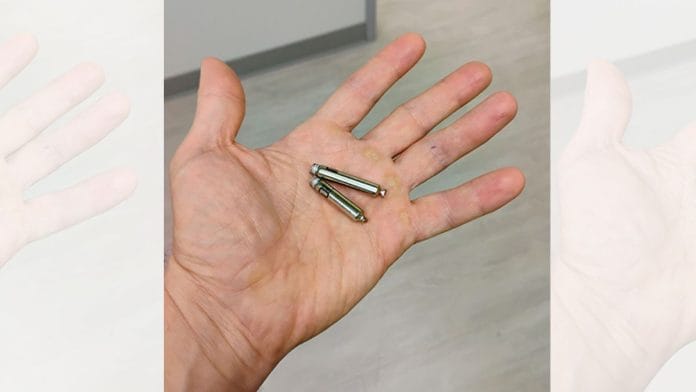New Delhi: Five months ago, a doctor at the UC Davis Medical Center in California implanted a dual leadless pacemaker in a 13-year-old girl suffering from a rare heart condition, giving her a shot at a healthy, active childhood.
It was the first time a dual leadless pacemaker was implanted in a child suffering from a congenital heart block, which affects one in every 15,000-22,000 children.
The condition entails obstruction to the heart’s electrical signals, resulting in fainting episodes, known as Stokes-Adams attacks, and sometimes, sudden death. Over time, the heart rate slows down to the point that it disrupts the connection between the brain and the upper part of the heart, limiting activity levels in a child.
Nearly five months after the procedure, Dr Daniel Cortez, who performed the implant as the director of paediatric electrophysiology at UC Davis, told ThePrint in an interview that the 13-year-old girl is doing exceptionally well.
“She is able to engage in physical activities and participate in gym class and even signed up for the soccer team. She is now planning to pursue athletics, something she had never been able to do before due to her slow heart rate, which often causes dizziness during physical exertion. Now, she can move forward as if she never had any electrical issues with her heart,” Dr Cortez said.
It is still in its early days, but the success of the implant procedure offers a ray of hope for children with congenital heart block and could help them lead a more active life.
Pacemakers are crucial for managing congenital heart blocks once symptoms worsen. For most children, pacemakers are a lifelong necessity, often limiting their physical activity for a safe and effective outcome.
But, Dr Cortez said that leadless pacemakers, compared to traditional ones, are minimally invasive and highly durable. “They consist of two capsule-like devices — one placed in the heart’s upper chamber and the other in the lower chamber — communicating via direct current through the bloodstream. With no wires or external components, these devices are resilient and allow children to safely engage in activities, such as football, volleyball, or wrestling,” he said.
Dr Cortez noted that while leadless pacemakers have been in use for a few years, the case he handled was unique. Previously, pacemakers were used in a single heart chamber, either the ventricle or the atrium, of children. However, this was the first time they successfully combined both chambers.
India has successfully carried out dual-leadless pacemaker implants, but not yet in children.
Dr Vanita Arora, a senior cardiologist at Apollo Hospital, emphasised the transformative potential of leadless pacemakers, particularly for young patients, by reducing the need for repeated interventions and improving the quality of life over time.
“In patients with congenital complete heart block, the pacemaker needs to be implanted at a young age and must last longer — which can be very challenging with the traditional pacemaker,” Arora explained.
Dr Cortez said that his patient had been monitored for years for congenital complete heart block and was referred to the UC Davis pediatric electrophysiology clinic three years ago after experiencing presyncope, a feeling of lightheadedness or dizziness without fainting.
Also Read: From scans & surgery to skincare, all under one roof, India’s pet clinics are getting modern upgrade
Risk in paediatric patients
Dr Cortez said that considering his patient was only 13 years old, size was a crucial factor in the procedure.
By age 10, most kids have neck veins large enough to accommodate leadless pacemakers safely. Dr Cortez noted that the main risk was the device design since leadless pacemakers are made for adults and typically inserted through leg veins.
Since children’s leg veins are often too small, the team used the neck vein, which proved a safer and more viable option. “Despite initial concerns, all patients treated this way have shown no issues with their veins post-procedure, underscoring the safety and success of this approach,” he said.
He also mentioned the additional considerations before the procedure, noting that ultrasound guidance is essential due to the smaller size of children’s hearts.
“Using an echocardiogram during the procedure ensures precise placement of the pacemaker,” Dr. Cortez said, adding that there is extensive testing to ensure accuracy and safety before deploying the pacemaker.
He emphasised that the main challenge in conducting the procedure on children lies in using ultrasound rather than relying solely on X-rays to pinpoint placement, ensuring the vein is sufficiently large to prevent any damage during the procedure.
(Edited by Madhurita Goswami)






